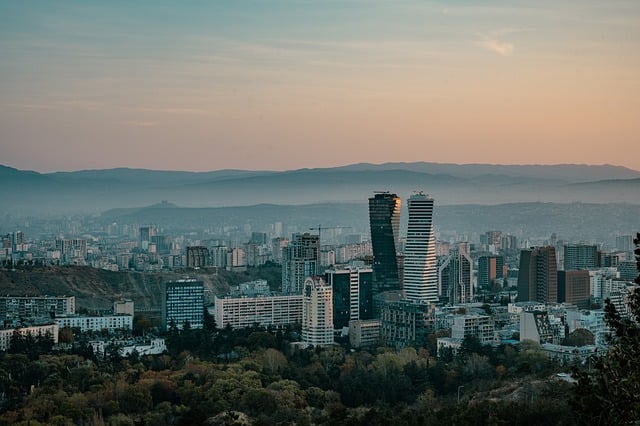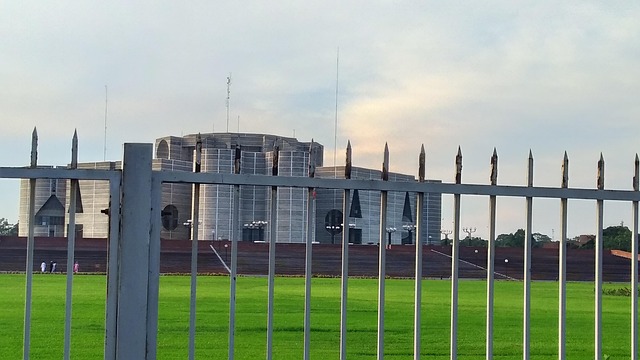
Karachi, Pakistan's economic backbone, has witnessed a remarkable journey in its banking sector since colonial times. The city's strategic location as a trading hub attracted European banks and, post-independence, fueled local and international bank expansion. Today, the 21st century digital revolution has transformed banking in Karachi with technology integration, reflecting the city's dynamic role as a driver of Pakistan's economic growth. Key milestones include the Karachi Stock Exchange (1947), banking sector liberalization (1990s), and advanced technology adoption (early 2000s). Shahra-e-Faisal, the premier banking district, is a testament to this evolution, hosting diverse financial institutions catering to all needs.
Karachi, Pakistan’s vibrant economic hub, has witnessed a remarkable evolution in its banking sector, contributing significantly to the city’s status as a prominent financial center. This article delves into the rich history and development of banks in Karachi, highlighting key milestones that have shaped its financial landscape. We then explore Shahra-e-Faisal, the heart of Karachi’s banking industry, focusing on its infrastructure, notable institutions, and unique services. Furthermore, it examines emerging trends, challenges, and future prospects for banks operating in this dynamic financial district, offering insights into Karachi’s evolving banking scenario.
- History and Development of Banks in Karachi
- – A brief overview of Karachi's banking sector growth
- – Key milestones and events shaping the city's financial landscape
- Shahra-e-Faisal: The Banking Hub
History and Development of Banks in Karachi

Karachi, as Pakistan’s financial hub and a bustling metropolis, has witnessed a remarkable evolution in its banking sector over the years. The history of banks in Karachi dates back to the colonial era when the city served as a strategic trading post. During this time, several European banks established their presence, laying the foundation for the modern banking system. These early institutions played a pivotal role in facilitating trade and commerce, catering to the needs of merchants and traders who flocked to the city.
Post-independence, Karachi continued to grow as an economic powerhouse, leading to the expansion and diversification of its banking landscape. Local and international banks alike set up branches, introducing advanced financial services and products. The 21st century has seen a further digital transformation, with many banks in Karachi embracing technology to enhance customer experience. This evolution reflects the city’s dynamic nature and its position as a key driver of Pakistan’s economic growth, where banking services are not just essential but seamlessly integrated into the daily lives of its residents.
– A brief overview of Karachi's banking sector growth

Karachi, Pakistan’s economic hub, has witnessed a remarkable transformation in its banking sector over the years. The city’s bustling financial landscape is a testament to its status as a major commercial center, attracting both local and international financial institutions. This growth is evident from the proliferation of banks along Shahra-e-Faisal, one of the metropolis’s most iconic avenues, which now hosts a diverse range of banking services under one roof.
The rise of Karachi’s banking sector can be attributed to several factors, including its strategic location, robust trade activities, and a growing pool of businesses seeking financial solutions. The city’s role as a financial gateway has encouraged the establishment of numerous local and multinational banks, offering a wide array of products and services to cater to various customer needs. This competitive environment has fostered innovation and enhanced the overall banking experience for residents and businesses alike in Karachi.
– Key milestones and events shaping the city's financial landscape

Karachi, Pakistan’s economic powerhouse, has witnessed a remarkable evolution in its financial landscape over the years, shaped by several key milestones and events. One of the earliest significant developments was the establishment of the Karachi Stock Exchange (KSE) in 1947, just after the city became the nation’s financial hub. This marked the beginning of organized capital markets in Pakistan, attracting investors and fostering economic growth.
In subsequent decades, pivotal moments such as the liberalization of the banking sector in the 1990s and the introduction of advanced technological solutions in the early 2000s further strengthened Karachi’s position as a financial center. The city’s banks, including leading institutions like Shahra-e-Faisal Bank, have played a crucial role in this transformation by offering innovative financial products, enhancing customer services, and contributing to the overall development of Karachi’s vibrant economy.
Shahra-e-Faisal: The Banking Hub

Shahra-e-Faisal, located in Karachi, is renowned as the banking hub of Pakistan. This vibrant street is home to a multitude of banks, offering a wide array of financial services under one roof. From local and international banks to microfinance institutions, the area serves as a one-stop destination for all banking needs.
The bustling streets of Shahra-e-Faisal are a testament to Karachi’s thriving economy. Here, business owners and individuals alike can access advanced banking solutions, facilitating their financial transactions with ease. This concentration of banking institutions has not only enhanced the accessibility of financial services but also fostered a competitive environment that drives innovation and customer-centric practices in the industry.
Karachi, known for its vibrant economy, has witnessed a remarkable evolution in its banking sector, as evidenced by the thriving Shahra-e-Faisal—a bustling banking hub. The city’s financial landscape has grown exponentially over time, adapting to changing economic dynamics and technological advancements. This historical development showcases Karachi’s position as a key financial center not just in Pakistan but also in the region, with Shahra-e-Faisal serving as a testament to its robust and diverse banking tapestry.






